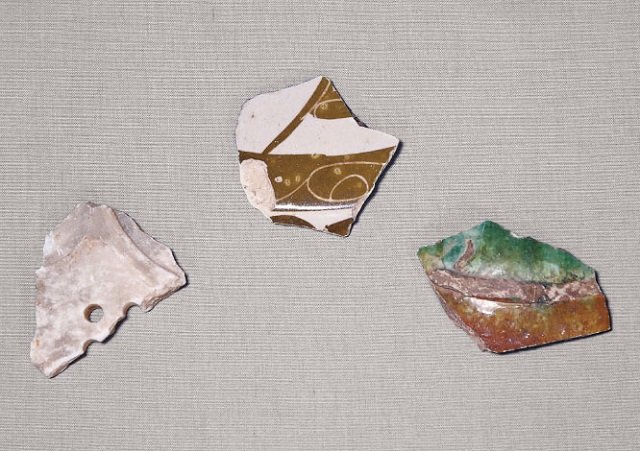Two fragments of glazed ceramics and a fragment of carved alabaster
- Object Name
- Two fragments of glazed ceramics and a fragment of carved alabaster
- Culture / Site
- Excavated at Gao, Mali
- Medium
- Ceramic; alabaster
- Date
- 10th/11th century
- Dimensions
- Various dimensions
- Credit Line
- Musée national du Mali, Bamako. Photograph by Seydou Camara
- Section
- Saharan Frontiers/Gao
- Description
Decorative glazed ceramics in a number of distinctive styles were transported across the Sahara, and fragments have been recovered at multiple sites. The large fragment of lusterware (center) and of splashware (right) were excavated at Gao in Mali, as was the piece of carved alabaster (left), which likely came from a source in Egypt or Syria. Lusterware was among the most ingenious innovations of Arab potters, who mixed silver sulfides and copper oxides to create a shiny, metallic sheen on the surface of glazed earthenware bowls, plates, and other utilitarian vessels. The decorative ware was popular in Egypt and greater Syria during the Fatimid period (909–1171). The technique also spread to North Africa and Andalusia, including the cities of Malaga and Valencia. Wide appreciation of lusterware is unsurprising given the pottery’s similarities to the shimmering sparkle of gold.
